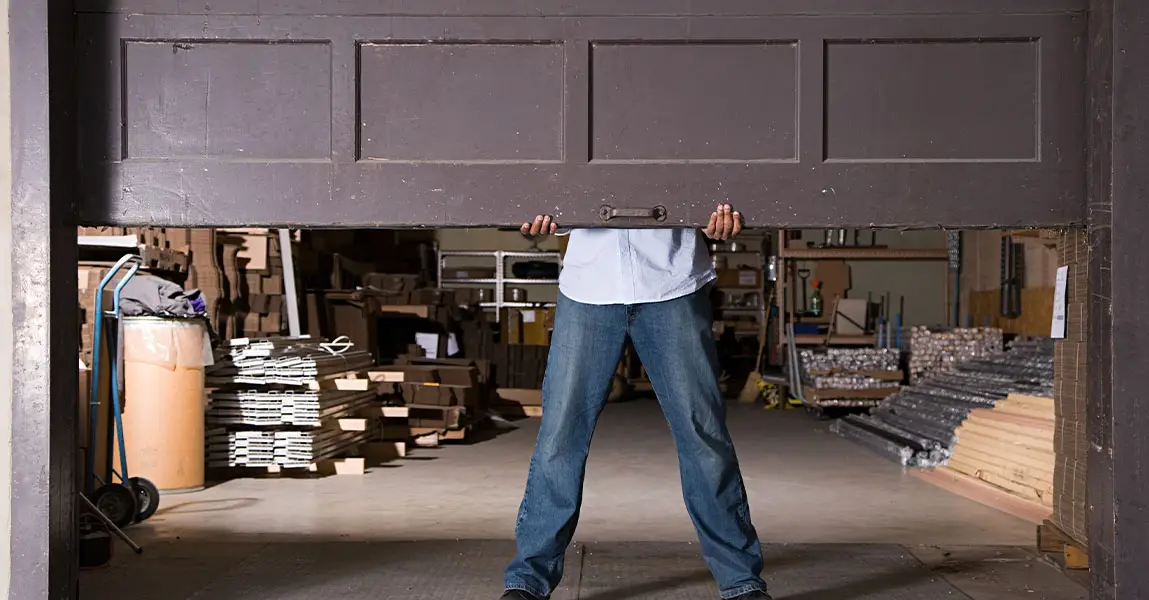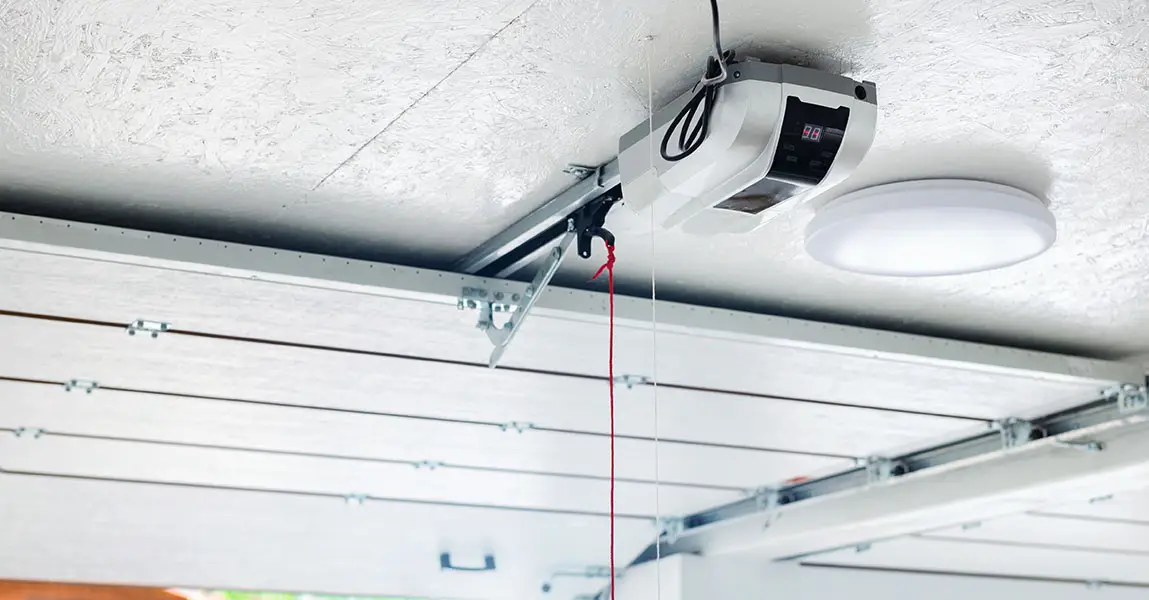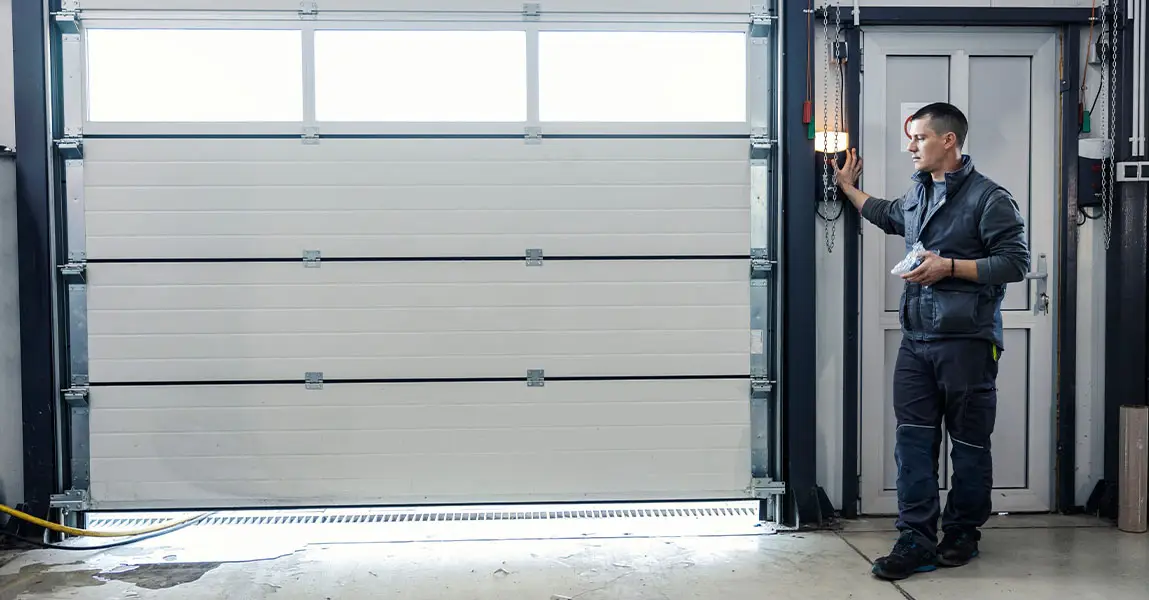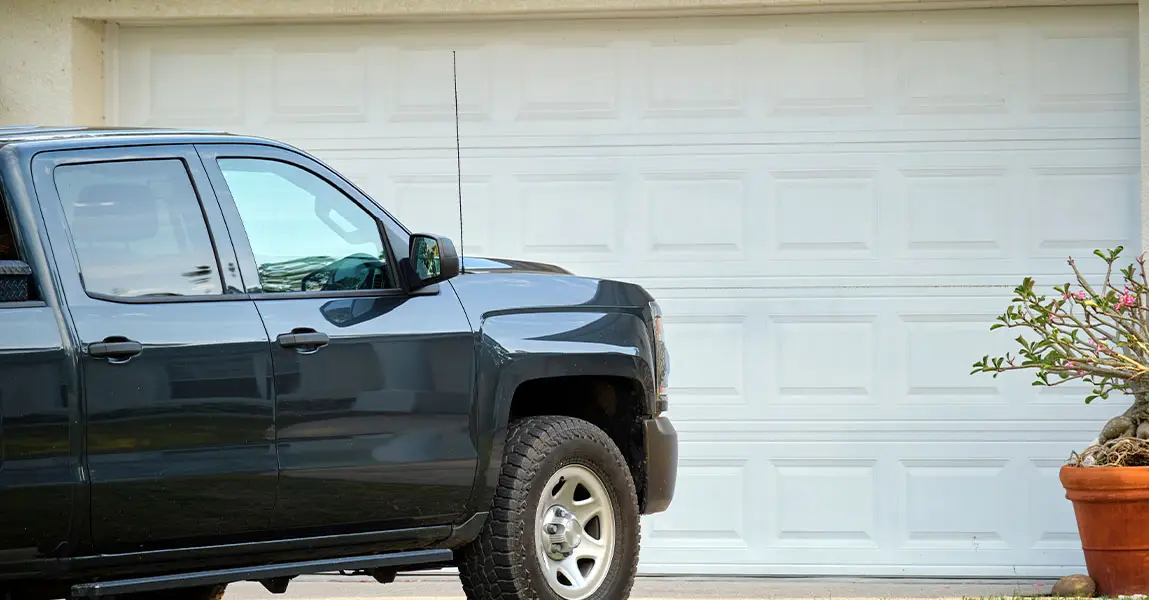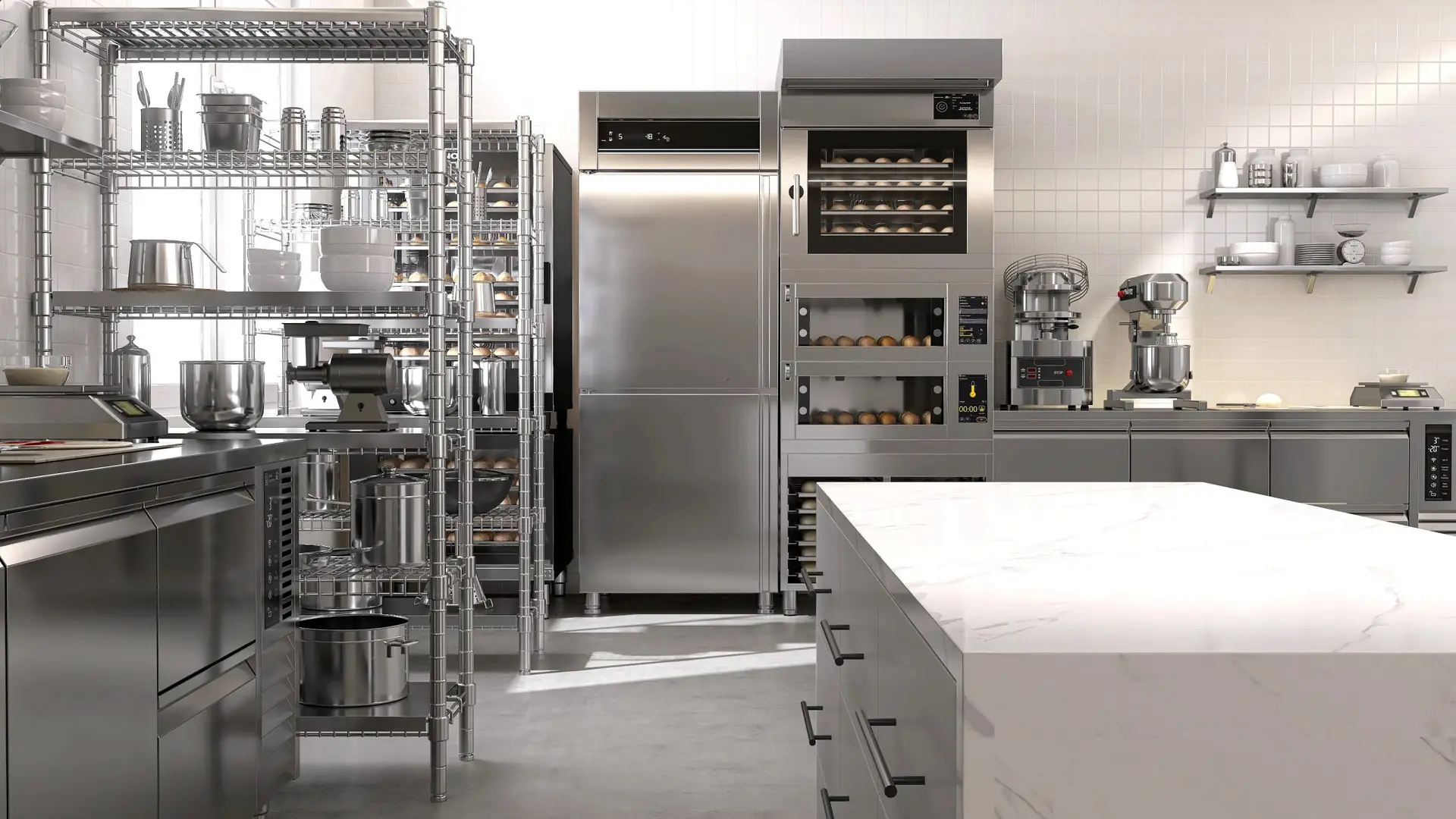Regular maintenance often feels like a chore until something breaks. Garage doors are no different. They work quietly in the background, opening and closing day after day. Yet the truth is that these systems carry a lot of weight and tension. If ignored, small issues can turn into costly repairs or safety risks. At True Fix Garage Doors, we believe annual inspections keep every homeowner safer, extend the lifespan of the door, and help avoid unnecessary surprises.
Understanding How a Garage Door Works
A garage door seems simple from the outside, but it’s actually a balance of tension, weight, and alignment. The springs counterbalance the door’s weight, cables control motion, and tracks guide it smoothly. When one of these parts weakens, the entire system becomes strained. That’s why annual inspections matter. They catch misalignments, rust, or frayed cables before failure happens.
We often find that small noises or slow movement are early signs of wear. Ignoring them can result in snapped springs or doors dropping unevenly. During a safety inspection, we test spring tension, lubricate moving parts, and verify the balance. These steps ensure that your garage door in Ottawa stays reliable throughout the year, especially during seasonal changes.
Why Annual Inspections Make a Difference
It’s easy to assume that a garage door can run for years without care. However, every cycle adds up to wear. Annual inspections give technicians a chance to reset that wear and prevent hazards. We use each visit to assess both mechanical and electrical parts. This includes openers, safety sensors, rollers, and brackets.
Many homeowners overlook safety sensors until the door refuses to close. These sensors protect people, pets, and vehicles from accidents. Dirt or misalignment can cause them to fail. Regular maintenance ensures they work as designed. Annual visits also prevent costly replacements by identifying worn bearings or loose hardware early.
The Hidden Cost of Skipping Inspections
Waiting until the door fails can seem like saving money in the short term. Yet when cables snap or openers burn out, the cost of emergency repairs far exceeds a yearly checkup. Beyond repair bills, malfunctioning doors can damage vehicles or cause injuries.
We’ve seen homeowners replace entire opener systems simply because worn springs were never adjusted. A proper inspection costs less than replacing parts prematurely. More importantly, it keeps families safe. Inspections are not about selling repairs, they’re about preventing the need for them.
Seasonal Changes and Their Impact
Ottawa’s climate challenges every mechanical system. Cold winters stiffen lubricants, while humidity in spring and fall promotes rust. Thermal expansion in summer can shift door alignment slightly. Over time, these conditions create strain on hinges and springs.
During a professional inspection, we adapt maintenance steps to each season. In winter, we focus on lubrication and door balance. In summer, we tighten tracks and check for warping. These small adjustments keep performance smooth year-round. When the weather changes again, your system stays ready.
How Professionals Check for Safety
A proper safety inspection follows a systematic process. We start with a visual check of all components, noting rust, cracks, or fraying. Next, we test door balance by disconnecting the opener and lifting manually. If it feels heavy or uneven, tension adjustment is needed.
We also inspect the torsion or extension springs for wear. A slight gap or stretch can mean the spring is weakening. After that, we examine cables, rollers, and hinges. Electrical checks include testing the force setting on the opener and confirming that the auto-reverse function responds properly. The process takes less than an hour but can prevent serious issues.
Reducing Long-Term Repair Costs
Homeowners often notice that regular inspections reduce their repair bills over time. Early intervention helps maintain the right tension and prevents one worn part from damaging another. For example, when a roller seizes, it can cause the opener to strain and fail sooner.
We also find that doors maintained annually last years longer. Springs keep consistent tension, and tracks remain aligned. This reduces friction, saves energy, and lowers noise. It’s a simple habit that pays off every year. Regular inspections make your investment more efficient and reliable without costly overhauls.
Safety for Families and Property
Garage doors are heavy, often weighing more than 150 pounds. If a spring or cable fails, that weight can drop suddenly. Regular inspections protect both people and property. We ensure that safety mechanisms like emergency releases and photo-eye sensors function as intended.
Families with children or pets especially benefit from this habit. During an inspection, we also educate homeowners on safe use. For instance, never pulling on loose cables and avoiding placing objects near sensors can prevent accidents. Safety starts with awareness, and inspections make that awareness routine.
What Homeowners Can Do Between Inspections
While professional checks are essential, homeowners can take simple steps year-round. Listen for grinding or jerking noises, and watch for uneven movement. Keep the photo sensors clean and ensure nothing blocks their path. Apply a small amount of silicone-based lubricant to the rollers and hinges every few months.
Also, check that remote controls respond instantly. A delay may signal a weak battery or a wiring issue. These simple habits bridge the gap between annual visits and keep your system working efficiently. When problems arise, never try to adjust springs yourself—they store enough force to cause injury.
Recognizing When Immediate Help Is Needed
Certain warning signs mean you shouldn’t wait for your next annual inspection. If the door shakes, tilts, or moves slower than usual, it’s best to stop using it. A burning smell from the opener, grinding sounds, or visible cable fraying all suggest serious issues.
In those cases, scheduling professional help right away prevents worse damage. Emergency technicians can safely secure the door and fix the issue before it leads to injury or property damage. Homeowners who stay alert save both time and money.
Environmental and Energy Benefits
Insulated and well-sealed garage doors save energy, but only if they close and seal properly. Misaligned tracks or worn weatherstripping let air escape, raising heating costs. Annual inspections help detect these small leaks.
We also test motor efficiency. A door that runs smoothly requires less power to lift, reducing the strain on your opener. This small efficiency gain adds up over time. Well-maintained doors protect both your home and the environment by cutting energy waste.
When to Schedule Your Annual Check
The best time to book an inspection is early spring or fall. These periods prepare your system for extreme weather ahead. Spring maintenance helps recover from winter wear, while fall ensures smooth operation during cold months.
However, if your door is already showing signs of trouble, don’t wait. Regular attention builds a consistent record of care, making each visit faster and more effective. You can easily schedule your service through the company’s page by using the contact us form.
Making Maintenance Part of Your Routine
Garage doors are easy to forget until something breaks. Setting a yearly reminder can turn inspections into a habit. Some homeowners align it with seasonal home checks, like changing smoke detector batteries.
This small step keeps every component in top shape and prevents unplanned expenses. Maintenance becomes part of home safety rather than an afterthought. The peace of mind that comes from knowing everything is secure is worth far more than the time it takes to schedule.
The Role of a Trusted Professional
An experienced technician understands more than mechanics. They know how each part interacts under tension and how to detect the earliest signs of wear. Trusting professionals for your inspections ensures accuracy, proper tools, and safe procedures.
We often find that first-time homeowners appreciate walking through the inspection process. Learning how your system works builds confidence and helps spot small changes later. Regular professional checks bring both education and safety together, keeping your system reliable for years.
Extra Tip: Keep Records of Every Service
Keeping a simple log of every inspection helps you track performance and plan replacements. Write down the date, findings, and any parts replaced. Over time, this record helps technicians identify patterns and anticipate future needs.
It also supports warranty claims when parts fail unexpectedly. Most importantly, it helps homeowners understand their system better. This small habit creates a clear history of care and adds value to your home if you ever sell it.
FAQs
1. How often should I schedule a garage door safety inspection?
Once a year is ideal for most households. Seasonal changes and regular use cause small wear that annual visits can correct before problems grow.
2. What parts are checked during an inspection?
Technicians inspect springs, cables, rollers, sensors, tracks, and openers. They test balance, lubrication, and safety systems to ensure smooth, reliable movement.
3. Can I perform a safety inspection myself?
You can do small checks like cleaning sensors or watching for uneven motion, but high-tension parts like springs need professional handling for safety.
4. What are warning signs that my garage door needs immediate service?
Grinding sounds, jerky motion, slow response, or uneven lifting are signs of trouble. Frayed cables or a heavy door also mean you should call a professional.
5. Do annual inspections really extend the lifespan of my door?
Yes. Consistent maintenance reduces wear and keeps parts balanced, which prevents strain on the opener and other hardware over time.

